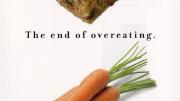As commissioner of the U.S. Food and Drug Administration, David A. Kessler, M.D. '77, sought to regulate tobacco. His new passion is the interaction of appetite and food marketing in the current obesity epidemic. This excerpt comes from his recent book, The End of Overeating: Taking Control of the Insatiable American Appetite (Rodale, $25.95).
Not long ago I flew to London to talk with top executives of one of the world’s largest global food companies. They were taking a beating from the British press about the industry’s role in the obesity epidemic. Some members of Parliament were exploring their regulatory options, such as revising food labeling requirements. The company invited me, along with European colleagues who had government experience with food regulation, to help them think about their responsibilities.
…I opened my set of PowerPoint slides to the one that showed a circle with the names of deadly diseases listed around its perimeter. At the center of the circle I’d written “obesity.” After outlining obesity’s role in stroke, hypertension, high cholesterol, and diabetes, I provided some numbers documenting the tremendous rise in the incidence of obesity and explained the flaws in the commonly held notion that our weight is set at a predetermined point.
…When I said that people tend to eat excessively if food is readily accessible, I could see the executives’ facial expressions begin to change. They understood that I was going to the heart of their business model. I described the stimulating qualities of sugar, fat, and salt, especially in combination, and told them that the brain is wired to focus on the most salient stimuli. “The more potent and multisensory you make your products, the greater the reward and the greater the consumption,” I said bluntly.
By way of analogy, I described the way nicotine gains the power to provoke desire.…The sight of the packaging, the crinkling sound of the wrapper, the tactile sensation as you light a cigarette and hold it between your fingers, and the sensory characteristics of the first puff all bolster the reinforcement.…
Shifting back to food, I told my audience that industry tactics and social norms bolster the reinforcing properties of sugar, fat, and salt in much the same way--through their appeal to the senses, the power of advertising, ready availability, and cultural patterns that allow us to eat all the time.
Put it all together, I said, and “You end up with a highly reinforcing product that provokes conditioned and driven behavior.”
For a moment there was complete silence in the room. Then one executive spoke up. “Everything that has made us successful as a company is the problem,” he said.
And then, to their credit, they began to rethink their strategies about labeling and portion size.









